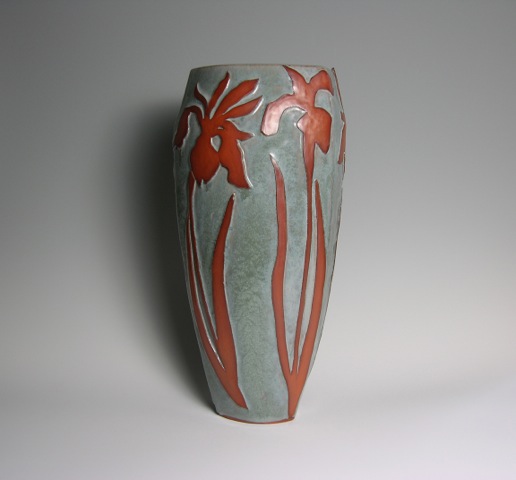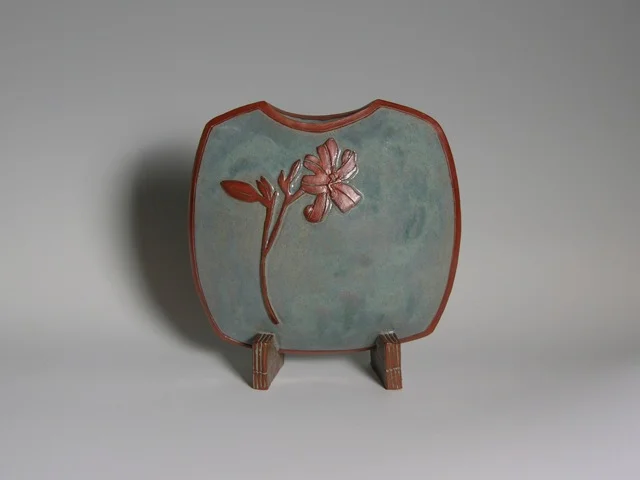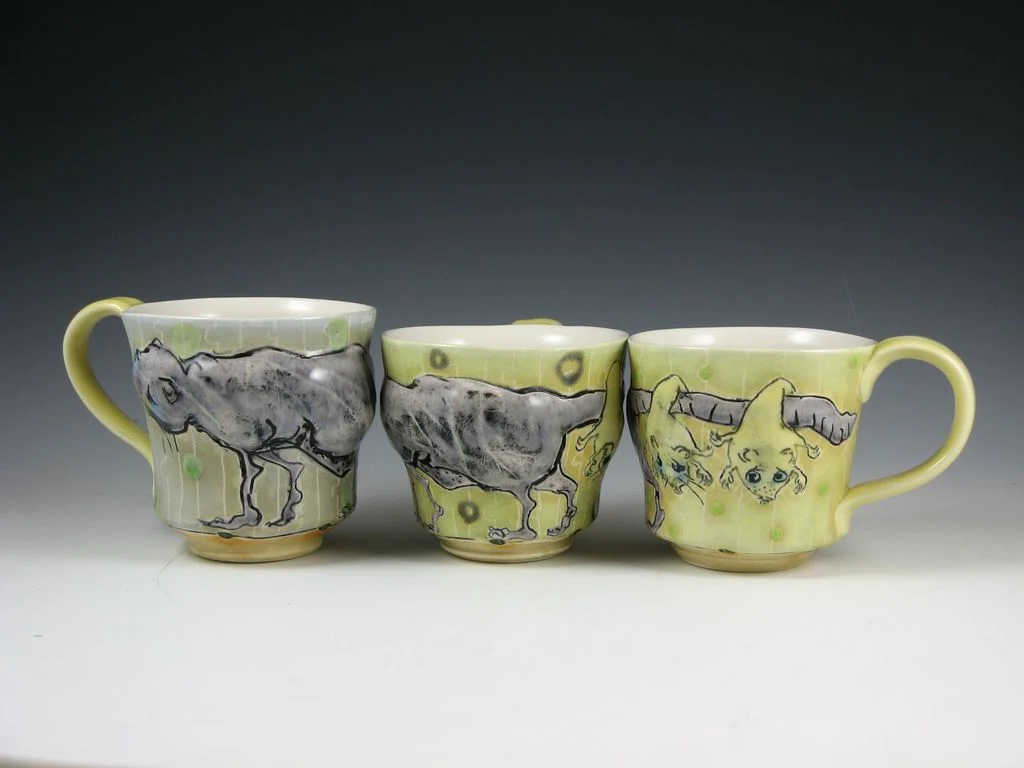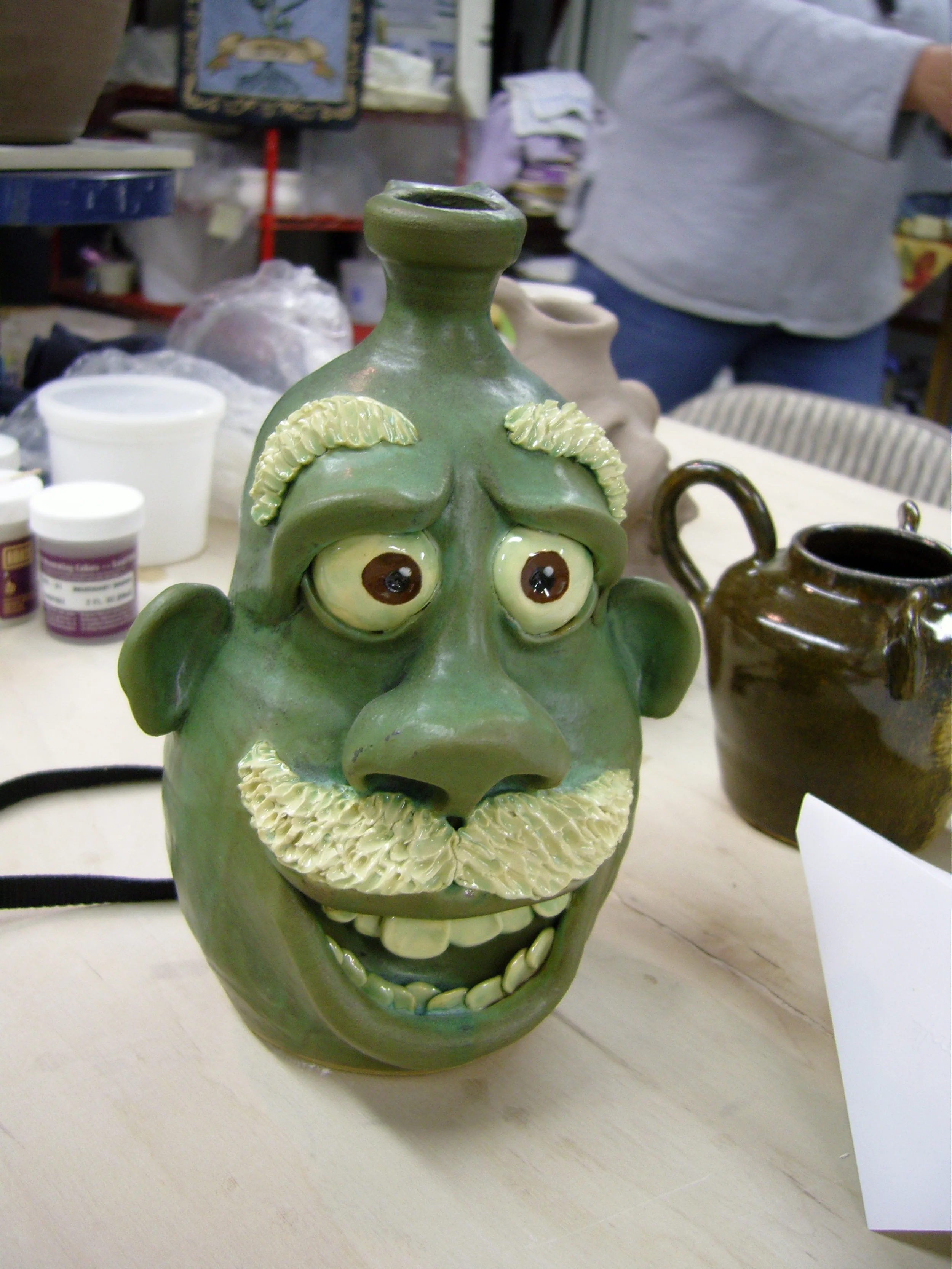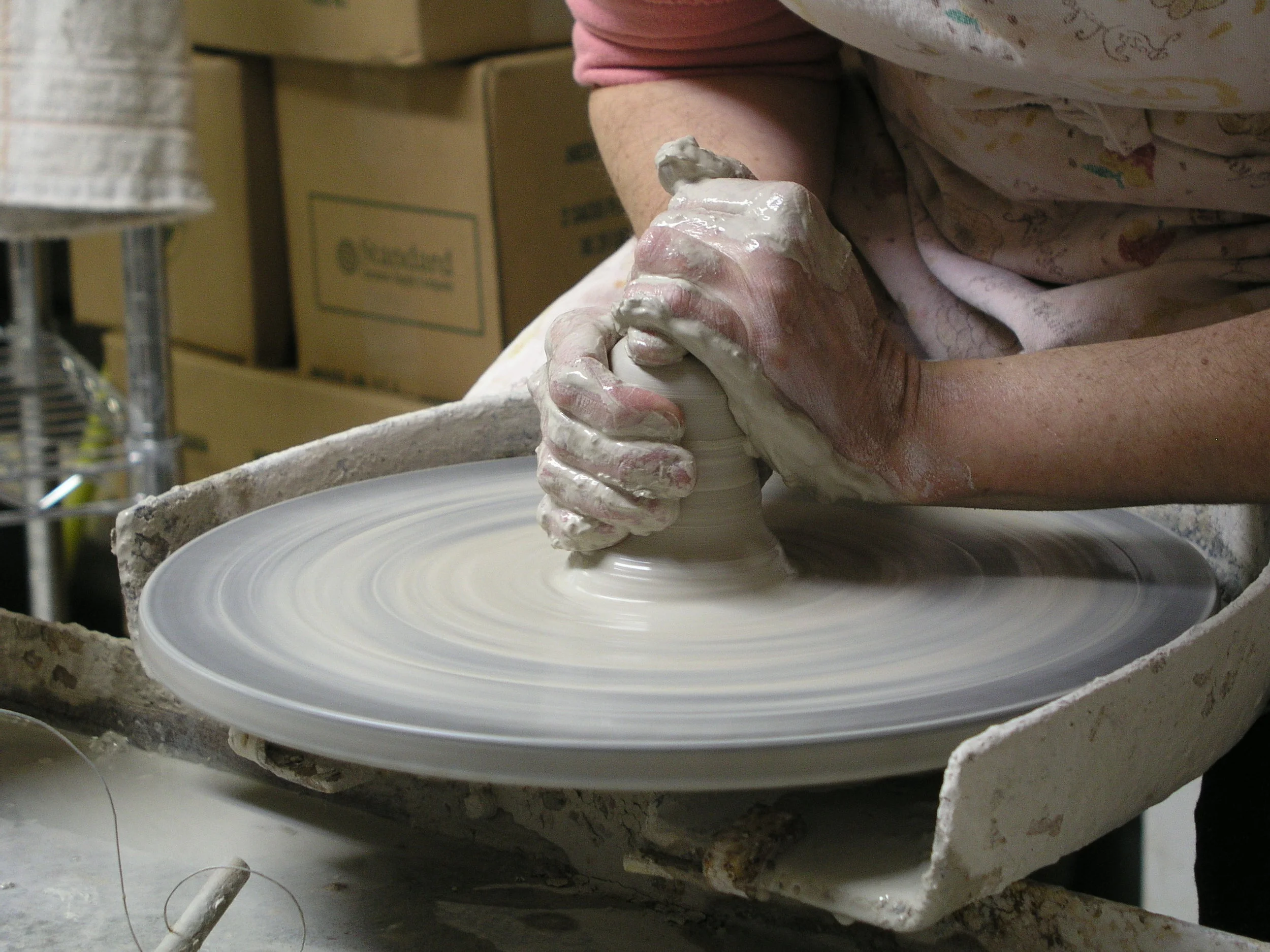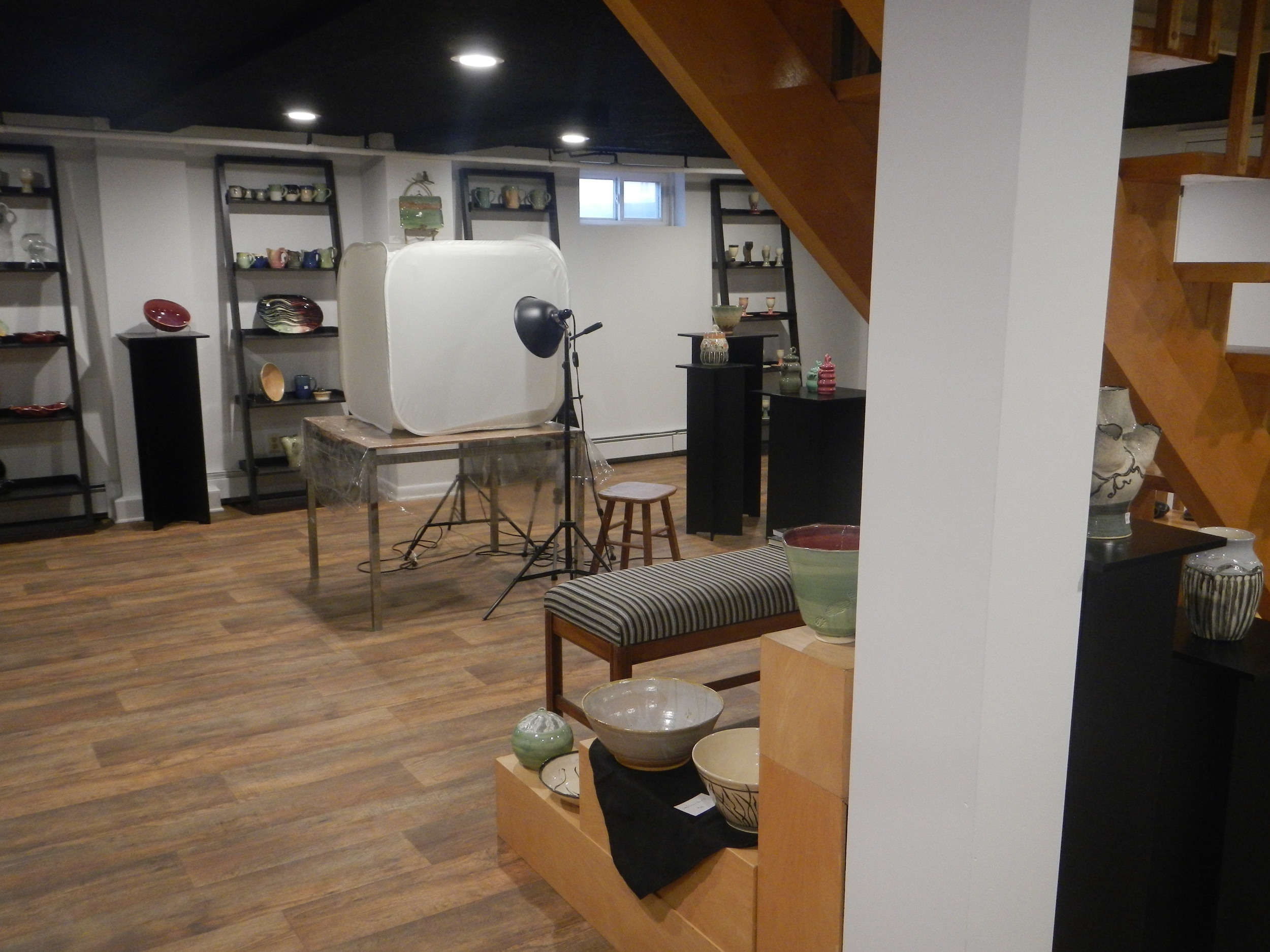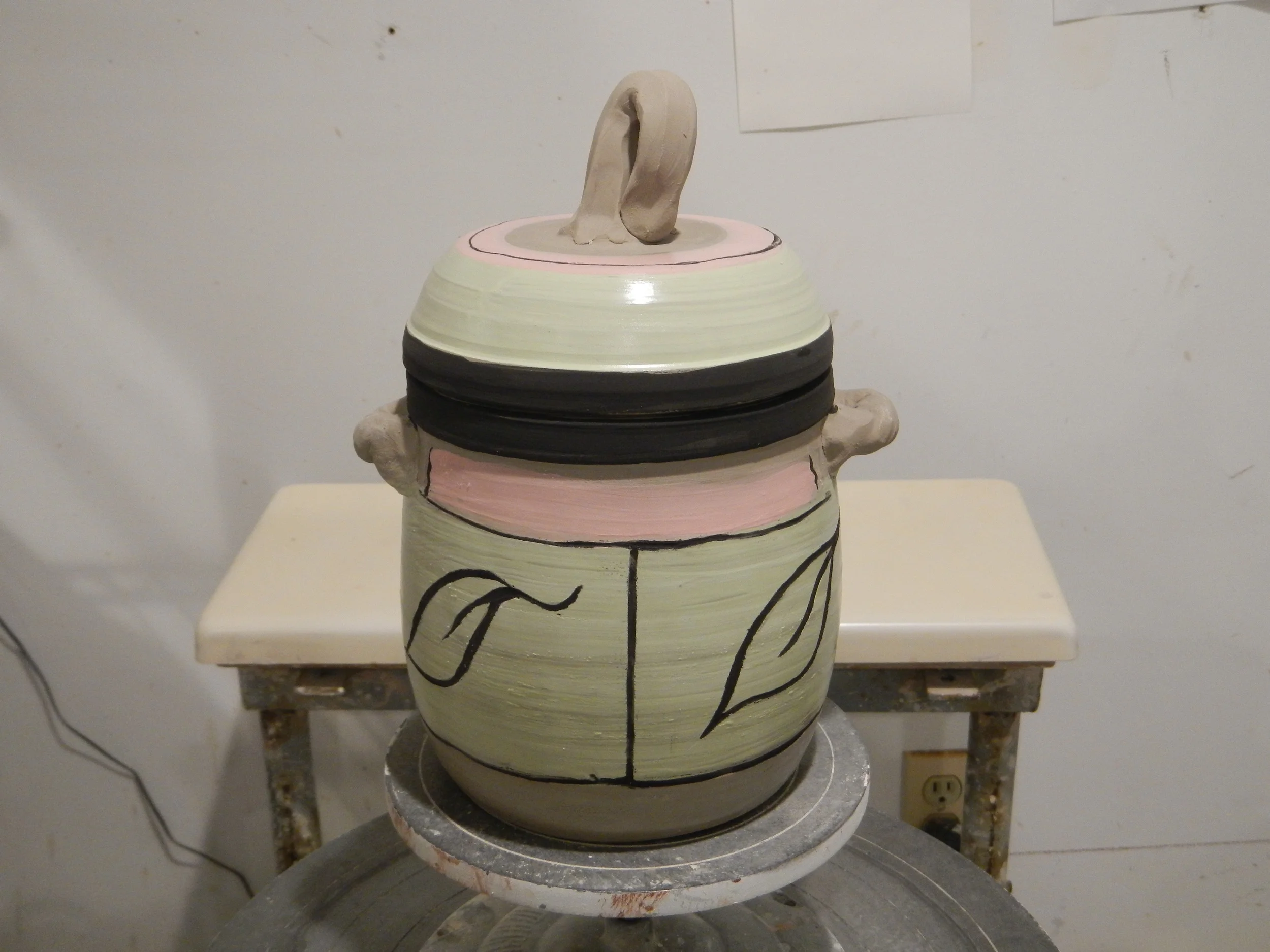The NJ Potters Guild is an interesting group of potters, numbering over 100 by now. I was there when the Guild started in 1987, a rank amateur, having just bought my first kiln. Although for quite a few years I kept a low profile in meetings, being the quiet type slowly finding my way with clay, this group has been an anchor for me in my professional life. Over the past 26+ years I have been seeing some amazing things from them. Here is a small sampling (alphabetically) of the work of several of my interesting and diverse peers.
Barbara Fehrs
Iris Vase Description: Red Earthenware clay, stretched slab construction. Surface treatment: Raised images with terra sigillata. Glazed on interior and exterior. 7"x15"
Lily Pillow Vase Description: Red Earthenware Clay, stretched slab construction. Surface treatment: raised image with terra sigillata. Glazed on interior and exterior 8"x8.5"
Barbara's work is available at m.t. burton gallery, Long Beach Island, NJ, and in Monmouth Museum Gift Shop in Lincroft, NJ. Her website is http://www.blackbird-pottery.com/.
DeBorah Goletz
Round Pocketbook Teapot, 6"x6"x3". Handbuilt stoneware clay, cone 6 oxidation glaze. Can be found on DeBorah's website: http://www.ForLoveOfMud.com and also found int he book 500 Teapots Vol. ii by Lark Publlishing: http:www.larkcrafts.com/craft-your-life/introducing-500-teapots-volume-2/
DeBorah designs and makes incredible murals in both ceramic and glass materials. (Sheepshead Bay, Brooklyn- that's DeBorah's mural in your subway station!)
Fountain Glass Mosaic Mural, 9'x11' Water cascades over surface. Private residence in Austin, TX. This and other murals can be found at http://www.ForLoveOfMud.com
Norma Messing
Mugs and Bowls, cone 6, oxidation. Porcelain inlaid with colored porcelain, by Norma Messing
Quadruple Bowls, stoneware, cone 6. Great for anything you like- olives, dips, snacks, side dishes, you name it! By Norma Messing
Two Goat Mugs, porcelain fired to cone 6, with inlaid decoration, terra sigillata and glaze, by Ellen Mulligan
Possum and Babies, three porcelain mugs, fired to cone 6, with inlaid decoration, terra sigillata and glaze, by Ellen Mulligan
Ellen's beautifully crafted work is also found at Gallery 23 in Blairstown, NJ. She shows with Tomo Potters and Underground Potters in New Jersey. And for those who knit or sew, Ellen makes these porcelain buttons as well.
Su Nottingham
Su's Face Jugs are a large, varied family with tons of personality. They seem to name themselves as she makes them. Su makes other pottery as well, utilizing her painting abilities, but today we feature the fellas...
Su says, "The shot glasses shared mighty rolling giggles as they emerged. They never shared their names and I often suspect that even if they had names, they probably wouldn't ever remember them. Had I been certain that they were teetotalers and hold only toothpicks, I might have reconsidered that decision."
Su says, "This is Walter. He introduced himself right after he had eyes to look me in the face. We bonded over the grand mustache he told me he preferred, but he never got around to telling me his whole story. With his ship captain facial growth and his choice of green glazing, perhaps in another life he enjoyed rum... perhaps a little too much. "
Su's entire family of Face Jugs can be found at http://facejugsbysun.blogspot.com/. Other work can be found at http://sunottinghampottery.blogspot.com/ and http://www.icehousepottery.org/Icehouse_Pottery/Member_Gallery/Pages/Su.htm
There are many more potters with fine work in our guild. I recommend visiting our Guild site and seeing some more!

